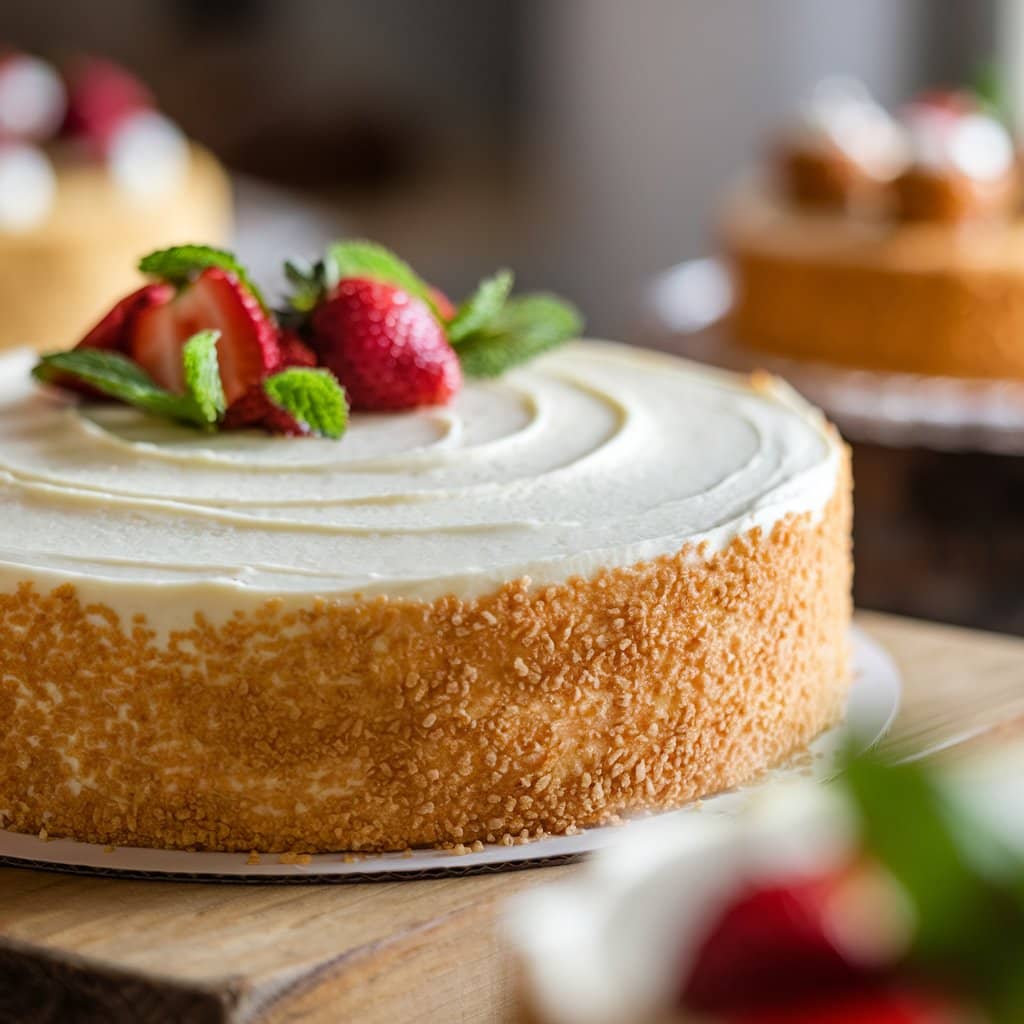Baking a super moist cake is every baker’s dream. Whether you are preparing a classic vanilla cake, a decadent chocolate dessert, or a fruity masterpiece, moisture plays a crucial role in creating a delicious, soft, and irresistible treat. But what exactly is the secret to a super moist cake? In this article, we’ll explore expert baking tips, essential ingredients, and professional techniques that ensure your cakes stay moist and flavorful every time.
Table of contents
Essential Ingredients for a Super Moist Cake
Creating a super moist cake starts with choosing the right ingredients. Each element in the cake recipe plays a vital role in retaining moisture, enhancing texture, and boosting flavor. Let’s break down the essential components that ensure your cake stays soft and moist.
Best Moisture-Retaining Ingredients
1. Butter vs. Oil:
- Butter: Known for its rich flavor, butter adds a creamy texture. However, its water content is lower than oil, making oil a better choice for moisture.
- Oil: Neutral oils like vegetable or canola oil are excellent for creating a soft, moist cake because they retain moisture longer than butter. Consider using a combination of both for optimal flavor and texture.
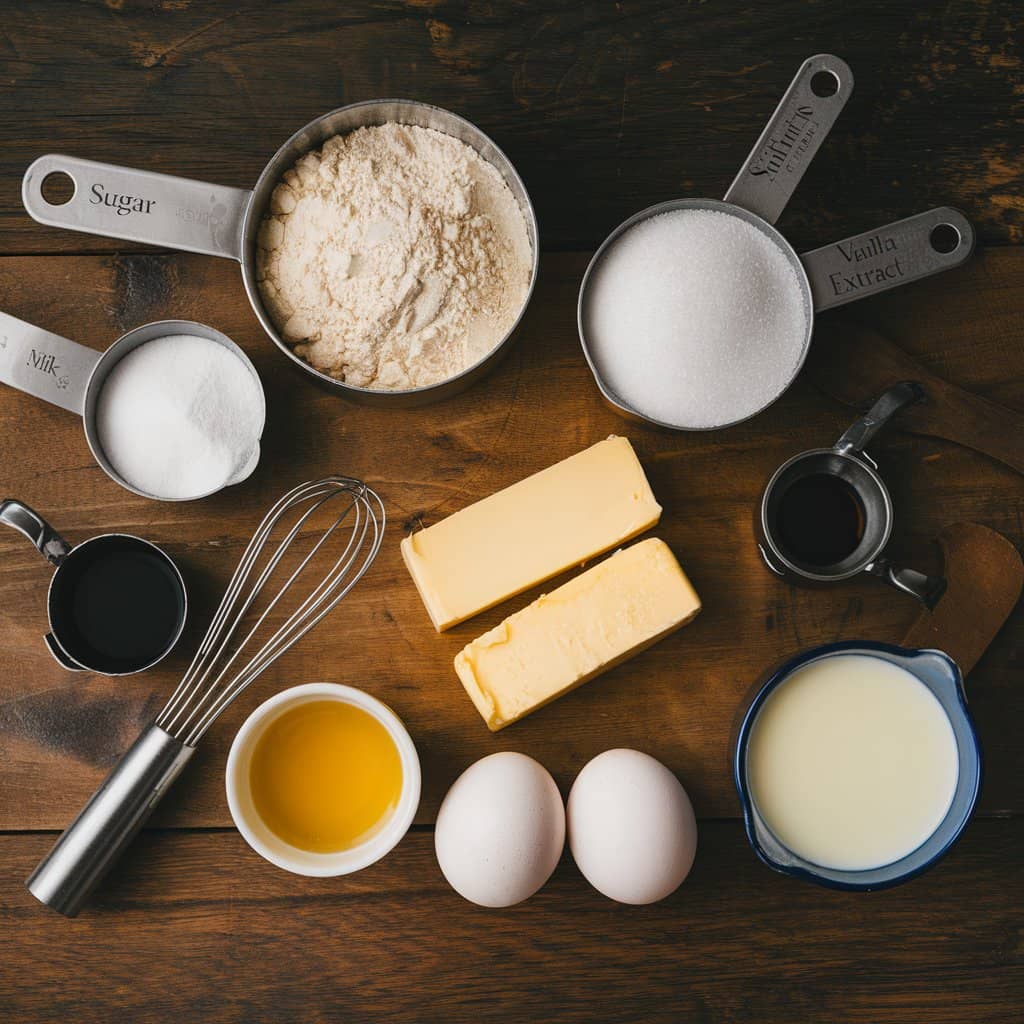
2. Eggs:
- Eggs provide structure and stability. The yolks add fat, which contributes to a tender crumb. Use large, fresh eggs for the best results.
3. Sugar:
- Sugar is more than a sweetener; it’s also a humectant, meaning it attracts and holds moisture. Brown sugar, in particular, adds a deep flavor and more moisture due to its molasses content.
4. Dairy Products:
- Buttermilk: Its acidity breaks down gluten, resulting in a soft texture.
- Sour Cream: Thick and rich, sour cream makes cakes incredibly moist and tender.
- Yogurt: A healthier alternative that also adds moisture and a slight tang.
Choosing the Right Flour
1. All-Purpose vs. Cake Flour:
- All-Purpose Flour: Best for dense cakes like pound cake.
- Cake Flour: Finer and lighter, making it perfect for soft, airy cakes. Its lower protein content results in less gluten formation, ensuring a tender crumb.
Use of Natural Sweeteners
Natural sweeteners add both sweetness and moisture. Consider these options:
- Honey: Adds moisture and a rich taste.
- Molasses: Great for dark cakes like gingerbread.
- Maple Syrup: Imparts a distinct, sweet flavor while boosting moistness.
Baking Techniques for a Super Moist Cake
The right baking techniques can make the difference between a dry, crumbly cake and one that’s perfectly moist and tender. Let’s explore some professional baking methods that will keep your cakes soft and delicious.
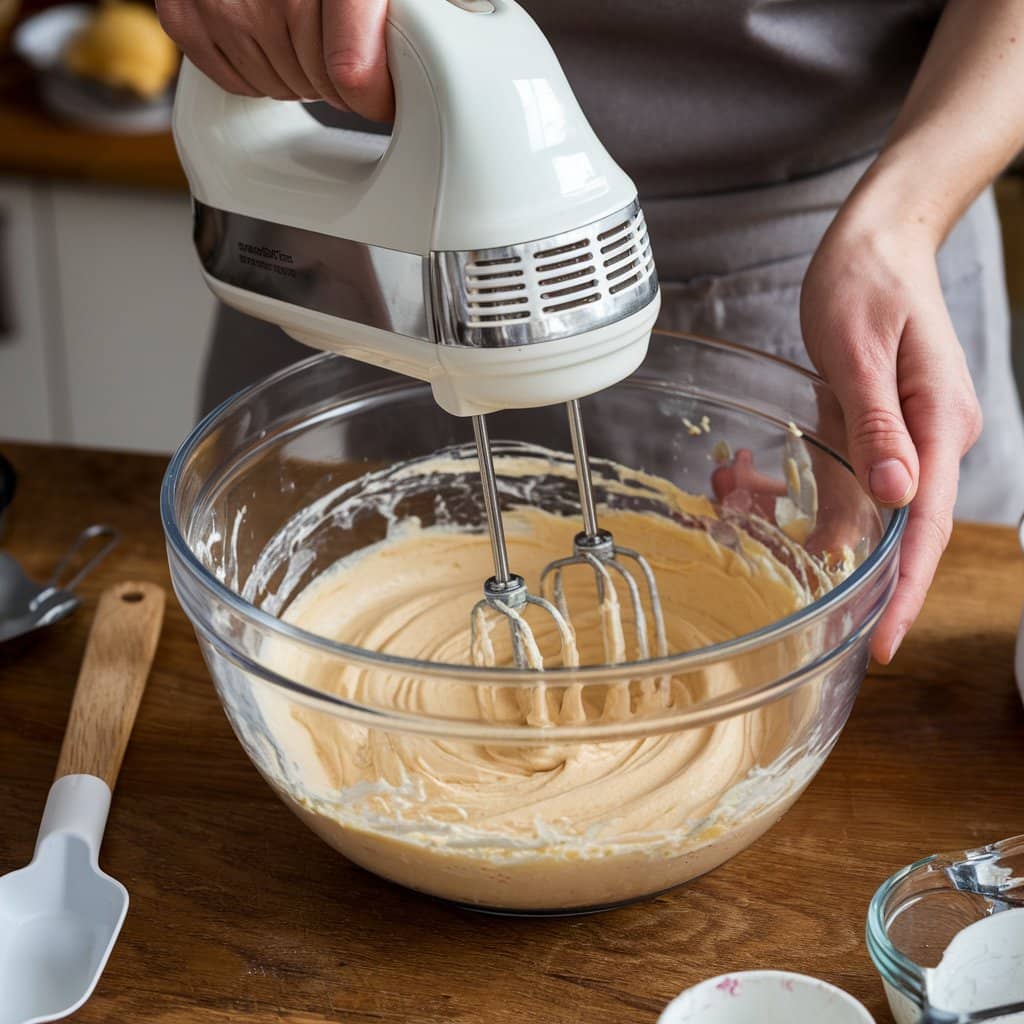
Correct Mixing Methods
1. Creaming Butter and Sugar:
- Creaming involves beating butter and sugar until light and fluffy. This creates air pockets that expand during baking, resulting in a lighter texture. Use a stand or hand mixer for best results.
2. Folding Ingredients Gently:
- When incorporating dry ingredients into the wet mixture, fold gently using a spatula. Overmixing can activate gluten, making the cake dense and dry.
3. Adding Eggs One at a Time:
- Add eggs one at a time, mixing well after each addition. This ensures even distribution and prevents the batter from separating.
Avoiding Overmixing
1. Why It Matters:
- Overmixing develops gluten, making cakes tough and dry. Mix just until ingredients are combined for a tender texture.
2. How to Prevent Overmixing:
- Use the lowest mixer speed when adding flour or other dry ingredients.
- Stop mixing as soon as you no longer see streaks of flour in the batter.
Room Temperature Ingredients
1. Importance of Room Temperature Ingredients:
- Ingredients like butter, eggs, and milk should be at room temperature for even blending. Cold ingredients can cause batter to curdle, affecting the cake’s texture.
2. How to Bring Ingredients to Room Temperature Quickly:
- Butter: Cut into small cubes for faster softening.
- Eggs: Place in warm water for 5-10 minutes.
- Milk and Cream: Microwave in short bursts until slightly warm.
Moisture-Boosting Tips for Cakes
Achieving a moist cake goes beyond the basic recipe. Incorporating special techniques and ingredients can add an extra layer of tenderness. Here are some tried-and-true tips to keep your cakes perfectly moist.
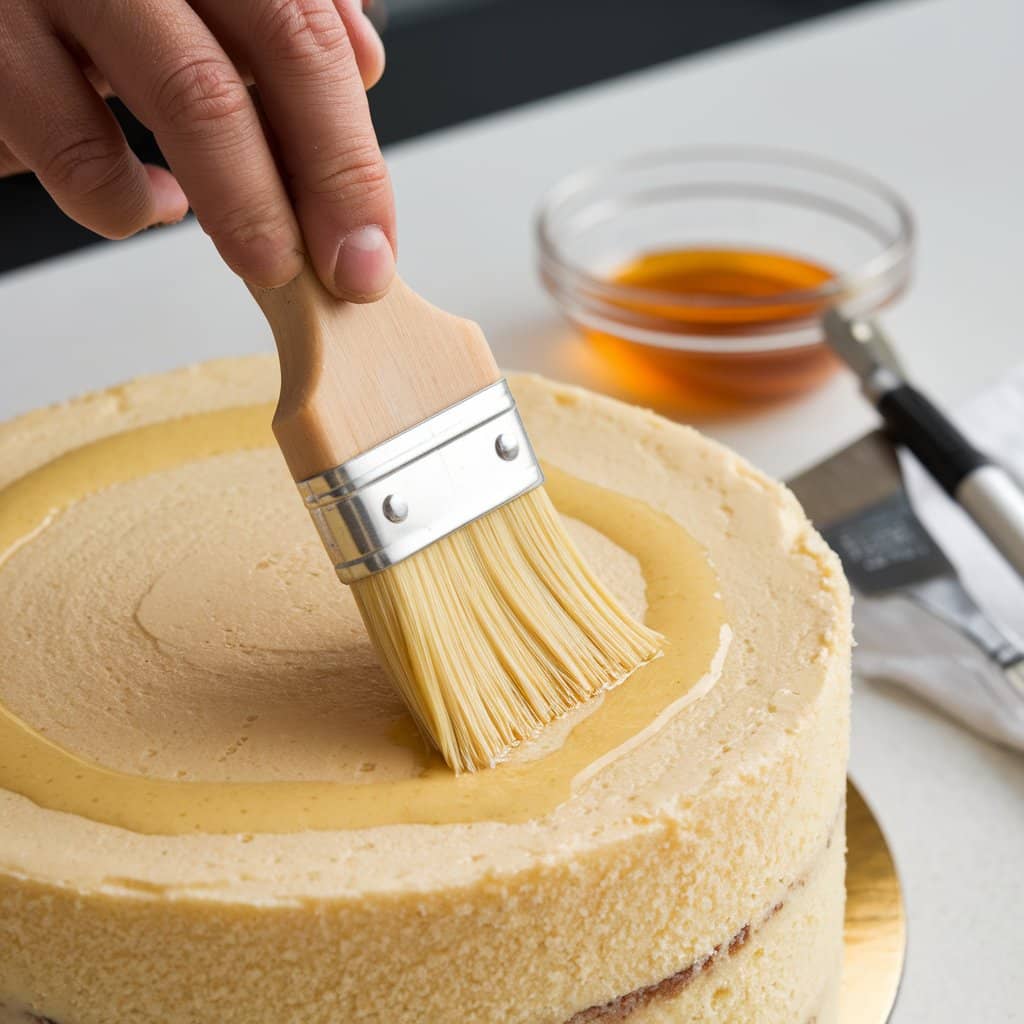
Adding Syrups and Soaks
1. Simple Syrup:
- A simple syrup made from equal parts water and sugar can be brushed onto cake layers after baking. It prevents dryness and enhances sweetness.
2. Fruit Juice Soaks:
- Use fruit juices like orange, lemon, or berry juice to add flavor and moisture. This is especially useful for fruity cakes or layer cakes.
3. Liquor-Infused Soaks:
- Alcoholic syrups made with rum, brandy, or liqueurs add depth of flavor and help retain moisture.
Use of Fruits and Purees
1. Mashed Fruits:
- Bananas: Great for banana bread and muffins due to their natural moisture content.
- Applesauce: Acts as a fat substitute while keeping cakes moist.
- Berries: Fresh or frozen berries burst during baking, adding both flavor and moisture.
2. Fruit Purees:
- Purees like pumpkin, sweet potato, and mango are perfect for creating dense, moist cakes.
Layering with Moist Fillings
1. Custards and Creams:
- Use creamy fillings such as pastry cream, chocolate ganache, or whipped cream between cake layers to increase moisture.
2. Fruit Compotes:
- Spread fruit compotes or jams between layers for added moisture and tangy flavor.
3. Frosting Choices:
- Opt for frostings like cream cheese or buttercream, which lock in moisture better than lighter options like whipped toppings.
Baking and Cooling Tips for a Moist Cake
Baking and cooling techniques are just as important as the ingredients when it comes to keeping a cake moist. Follow these expert tips to bake your cake to perfection while preserving its softness and texture.
Proper Baking Time and Temperature
1. Preheat the Oven:
- Always preheat your oven to the correct temperature before baking. An uneven or cold oven can result in dry, undercooked cakes.
2. Use the Right Temperature:
- Follow the recipe’s recommended temperature. Baking at too high a temperature can cause the cake to rise too fast, crack, and dry out. A moderate, consistent heat ensures even baking.
3. Monitor the Baking Time:
- Start checking the cake a few minutes before the suggested baking time. Insert a toothpick into the center; if it comes out clean or with a few moist crumbs, the cake is done.
Use of Proper Bakeware
1. Choose the Right Pan:
- Use light-colored, non-stick baking pans for even heat distribution. Dark pans absorb more heat, causing cakes to bake too fast and dry out.
2. Line the Pan:
- Grease and line the baking pan with parchment paper. This prevents sticking and helps retain moisture during baking.
Cooling and Storage Techniques
1. Cool the Cake Correctly:
- Let the cake cool in the pan for about 10-15 minutes after baking. Transfer it to a wire rack to cool completely. Cooling too quickly can cause the cake to lose moisture.
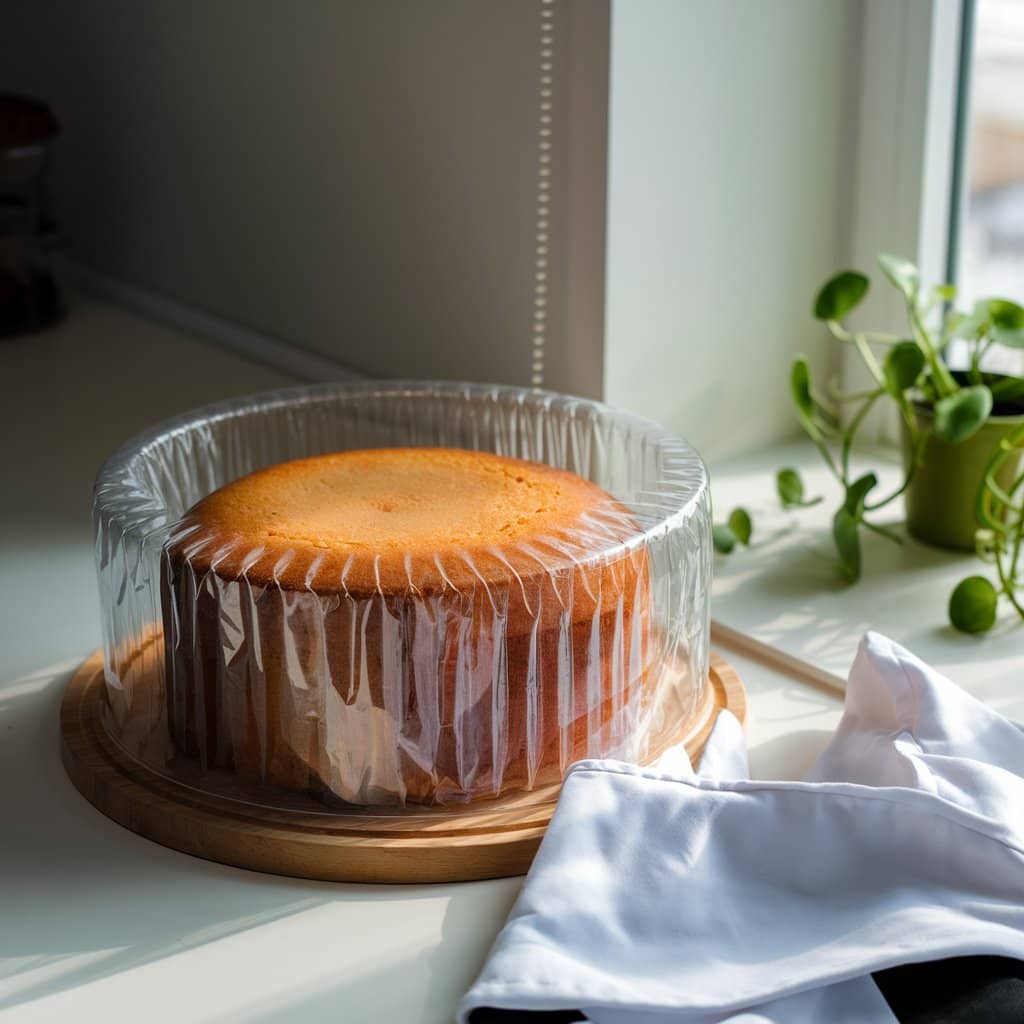
2. Wrap the Cake:
- Once the cake is completely cool, wrap it tightly in plastic wrap or aluminum foil. This traps moisture and prevents the cake from drying out.
3. Store Properly:
- Store cakes at room temperature for up to 3 days in an airtight container. For longer storage, refrigerate the cake, but allow it to return to room temperature before serving.
Recap of Key Tips for a Moist Cake
- Choose the Right Ingredients:
- Use moisture-locking ingredients like oil, butter, eggs, and dairy products.
- Incorporate natural sweeteners such as honey or molasses for added moisture.
- Use cake flour for a tender crumb, or blend all-purpose flour with cornstarch if needed.
- Master Baking Techniques:
- Cream butter and sugar properly to create air pockets.
- Avoid overmixing to prevent gluten formation.
- Use room-temperature ingredients for smooth batter consistency.
- Enhance Moisture with Extra Steps:
- Apply simple syrup, fruit juice, or flavored soaks after baking.
- Add fruits, purees, and creamy fillings for extra moisture.
- Bake with Precision:
- Preheat the oven and maintain the correct baking temperature.
- Use light-colored pans and avoid opening the oven door frequently.
- Test for doneness using a toothpick or cake tester.
- Store Cakes Properly:
- Cool the cake completely before wrapping it tightly in plastic wrap.
- Store at room temperature for short-term use or refrigerate if needed.
- Let refrigerated cakes return to room temperature before serving.
Final Thoughts on Baking the Perfect Cake
Baking a super moist cake is achievable with practice, patience, and the right techniques. By following the expert tips outlined in this guide, you’ll be able to create cakes that are rich in flavor, soft in texture, and incredibly satisfying. Experiment with different recipes, fillings, and frostings to discover your signature style.
Remember, every cake tells a story. Whether you’re baking for a special occasion or a simple family treat, mastering the art of cake baking ensures that your creations are unforgettable. Happy baking!
Advanced Tips for Baking a Super Moist Cake
Achieving a perfectly moist cake requires more than just following a recipe. Professional bakers use advanced techniques that take cakes from good to extraordinary. Let’s explore these expert tips to elevate your cake-baking game.
Use the Right Mixing Method
- Reverse Creaming Method:
- In this method, dry ingredients are mixed first, and butter is added gradually before incorporating liquids. This process reduces gluten development, resulting in a fine, moist crumb.
- Alternate Wet and Dry Ingredients:
- When adding wet and dry ingredients, alternate them, beginning and ending with the dry ingredients. This prevents the batter from curdling and ensures a smooth, even texture.
Experiment with Unique Ingredients
- Adding Sour Cream or Greek Yogurt:
- These thick dairy products add fat and acidity, keeping cakes moist and tangy. Use them to replace a portion of the milk or buttermilk in the recipe.
- Incorporating Pudding Mix:
- Adding instant pudding mix to the batter boosts both moisture and flavor, making cakes richer and softer.
- Using Coconut Milk or Almond Milk:
- Dairy alternatives like coconut milk add extra moisture and a hint of exotic flavor.
Perfecting Baking and Cooling Techniques
- Low and Slow Baking:
- Bake your cake at a slightly lower temperature for a longer time. This gentle heat prevents the cake from drying out while ensuring even baking.
- Baking with Water Baths:
- Place a pan of water in the oven while baking. The steam generated keeps the cake moist, especially for delicate cakes like cheesecakes and sponges.
- Cooling Upside Down:
- For sponge and chiffon cakes, cool them upside down on a rack to maintain structure while preserving moisture.
Storage and Serving Secrets
- Seal in Moisture:
- After the cake cools, wrap it tightly in plastic wrap and let it rest for a few hours or overnight. This resting period enhances flavor and ensures a moist texture.
- Serve at Room Temperature:
- Always serve cakes at room temperature for the best taste and texture. Refrigerated cakes should sit out for at least 30 minutes before serving.
FAQs About Making a Super Moist Cake
Baking a super moist cake involves understanding essential techniques, ingredients, and troubleshooting tips. Here are some frequently asked questions to help you achieve the perfect cake every time.
FAQ 1 – What Causes a Cake to Be Dry?
Several factors can cause a dry cake, including overbaking, using too much flour, or not enough fat or liquid. Following the correct recipe measurements and baking times is essential.
FAQ 2 – How Do You Keep a Cake Moist After Baking?
Wrap the cooled cake tightly in plastic wrap or aluminum foil and store it in an airtight container. For added moisture, brush the cake layers with simple syrup before frosting.
FAQ 3 – What Can I Add to a Cake Mix for Extra Moisture?
Add ingredients like sour cream, pudding mix, or an extra egg to cake mixes. Substituting water with milk or buttermilk can also improve moisture.
FAQ 4 – Can You Make a Cake Moist Without Oil?
Yes, using alternatives like melted butter, applesauce, or mashed bananas can keep a cake moist while adding flavor. Greek yogurt and sour cream are also great substitutes.
FAQ 5 – Does Refrigerating a Cake Dry It Out?
Refrigerating can dry out a cake if it’s not properly wrapped. Always cover the cake tightly with plastic wrap or store it in an airtight container to maintain moisture.
FAQ 6 – How Do Professional Bakers Keep Cakes Moist?
Professional bakers often use soaking syrups, brush cakes with flavored liquids, and layer cakes with moisture-locking fillings like custard, ganache, or fruit compote.
Unlocking the Secret to a Super Moist Cake
Conclusion: What Is the Secret to Super Moist Cake?
Baking enthusiasts often wonder, What is the secret to super moist cake? The answer lies in a combination of quality ingredients, precise baking techniques, and thoughtful storage practices. From selecting the best flour and fats to mastering the right baking temperature, each step plays a crucial role.
When asking yourself What is the secret to super moist cake?, remember that small adjustments can make a big difference. Adding moisture-rich ingredients like sour cream, buttermilk, or fruit purees keeps your cake tender and delicious. Brushing layers with simple syrup or fruit juice enhances both moisture and flavor.
Additionally, cooling and storing cakes properly is essential. Wrapping your cake tightly and letting it rest allows flavors to develop while keeping the texture soft and moist. So the next time you bake, follow these tips, and you’ll never have to ask What is the secret to super moist cake? again.
Master these strategies, and your cakes will consistently turn out rich, flavorful, and perfectly moist. Happy baking!

